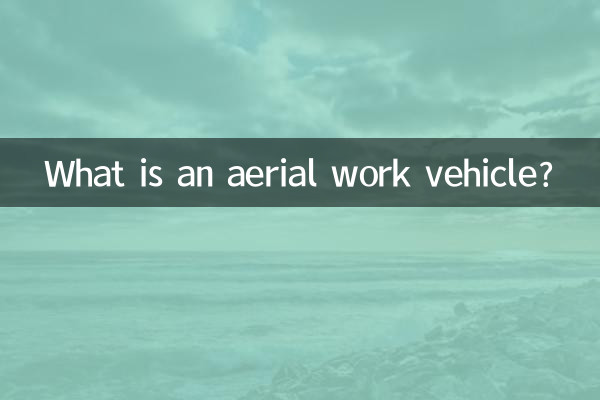What is an aerial work vehicle?
Aerial work vehicles are engineering vehicles specially used for high-altitude operations and are widely used in construction, electric power, communications, municipal administration and other fields. It uses hydraulic or mechanical systems to lift workers and equipment to high altitudes to complete tasks such as maintenance, installation, and cleaning. In recent years, with the continuous improvement of urban construction and infrastructure, the demand for aerial work vehicles has gradually increased and has become one of the hot topics.
The following is a summary of hot content on aerial work vehicles across the Internet in the past 10 days:

| hot topics | heat index | Main discussion content |
|---|---|---|
| Safety regulations for aerial work vehicles | 85 | Discuss operating safety standards and accident prevention measures for aerial work vehicles |
| New electric aerial work vehicle released | 78 | Many manufacturers launch environmentally friendly electric aerial work vehicles to reduce carbon emissions |
| Aerial work vehicle rental market growth | 72 | Analyze the market size and future trends of the aerial work vehicle rental industry |
| Aerial work vehicle accident case analysis | 65 | Analysis of the causes and responsibilities of recent aerial work vehicle accidents |
Main types of aerial work vehicles
Aerial work vehicles can be divided into the following types according to their different structures and functions:
| Type | Features | Applicable scenarios |
|---|---|---|
| Scissor type aerial work vehicle | High stability and large working platform | Interior decoration, warehouse operations |
| Boom type aerial work vehicle | Large telescopic range and high flexibility | Outdoor construction, electrical maintenance |
| Mast type aerial work vehicle | Compact and suitable for narrow spaces | Factory maintenance and equipment installation |
The core advantages of aerial work vehicles
Compared with traditional scaffolding, aerial work vehicles have obvious advantages:
1.Efficiency: It can be lifted and lowered quickly, saving a lot of time in setting up and dismantling.
2.security: Equipped with multiple protection devices, such as anti-fall system, emergency braking, etc.
3.Flexibility: Appropriate models can be selected according to different operating requirements to adapt to various environments.
4.Economy: Although the initial investment is larger, the long-term use cost is lower than that of manual scaffolding.
The latest development trends of aerial work vehicles
According to industry data, the aerial work vehicle market is showing the following trends:
| Trend | Specific performance | expected impact |
|---|---|---|
| Intelligent | Add remote monitoring, automatic leveling and other functions | Improve operational accuracy and safety |
| electrification | More manufacturers launch pure electric models | Reduce environmental pollution and noise |
| Lightweight | Use new materials to reduce body weight | Improve transportation and mobility efficiency |
Suggestions for purchasing aerial work vehicles
For users who need to purchase an aerial work vehicle, it is recommended to consider the following factors:
1.Working height:Choose the appropriate working height according to actual needs.
2.working environment: Consider indoor or outdoor, ground conditions and other factors.
3.Carrying capacity: Ensure the platform can accommodate the required personnel and equipment.
4.Maintenance cost: Evaluate the convenience of subsequent maintenance and repairs.
5.Brand reputation: Choose a well-known brand with good after-sales service.
As technology advances and market demand grows, aerial work vehicles will play an important role in more fields. Understanding its characteristics and development trends can help users make more informed purchasing and usage decisions.

check the details

check the details